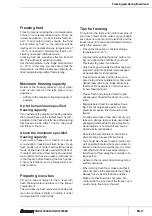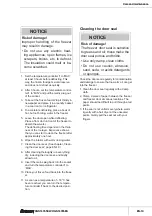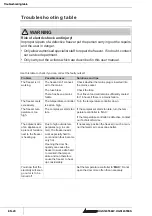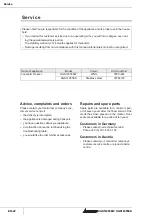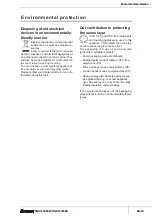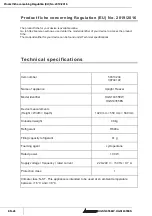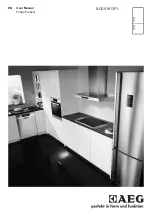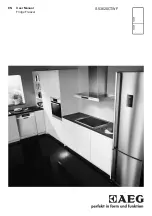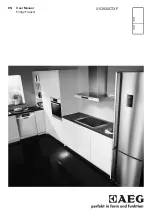
HGS14355EW, HGS14355ES
HGS14355EW, HGS14355ES
Freezing food
Freezing means reducing the core temperature
of fresh, room-temperature food to frozen as
quickly as possible – for best results “flash-fro-
zen”. If not cooled quickly enough, the food
will be “killed by frost”, i.e. the structure will be
destroyed. A constant storage temperature of
–18 °C is needed to maintain the food’s con-
sistency, taste and nutritional value.
Freezing food has a positive effect on its shelf
life. This will help to avoid food waste.
Set the temperature in the fridge compartment
to –18 °C. In this way, you can ensure that the
temperature conditions inside are optimally uti-
lised, guaranteeing optimal food storage.
Maximum freezing capacity
Details of the freezing capacity of your appli-
ance can be found on the type plate of your
appliance.
• Adhere to the maximum freezing capacity if
possible.
Up to the maximum specified
freezing capacity
If you adhere to the maximum freezing capacity,
the food will freeze at the fastest rate. The tem-
perature in the freezer briefly rises after placing
fresh goods inside. After 12 hours, the goods
are frozen to the core.
Above the maximum specified
freezing capacity
If you want to freeze more food in one go as
an exception, freezing will take longer. Keep
fresh goods out of contact with existing frozen
foods, as the frozen foods could start to defrost.
If contact with stored food cannot be avoided,
we recommend that you create a cold reserve
in the freezer before freezing the fresh goods.
2 hours beforehand, set the temperature con-
troller to MAX.
Preparing ice cubes
Fill an ice cube container to the ¾ level with
fresh drinking water and place it in the freezer
compartment.
The ice cubes are best removed by bending the
ice cube container slightly or holding it under
running water for a short while.
Tips for freezing
To maintain the taste and nutritional value of
your frozen foods and to make sure your appli-
ance does not use too much electricity and the
freezer does not need to be defrosted unneces-
sarily often, please note:
– Frozen food requires a constant storage
temperature of –18 °C.
– A temperature setting that is too high or too
low can reduce the shelf life of your food.
This leads to greater food waste.
– Only freeze good quality food that has been
prepared, split into portions and packaged
as appropriate for its properties.
– Freeze meat, poultry and fish raw or pre-
pared into portions suitable for at home and
defrost them later in the fridge. Make sure
that meat, for example, is not immersed in
its own thawing liquid.
– Freeze fresh and prepared food dry and
unseasoned. Unsalted foods are more du-
rable.
– Allow prepared food to cool before freez-
ing. This not only saves power, but also
prevents excessive frost formation in the
freezer.
– To make sure frozen food does not dry out,
take on a strange taste or leak, use robust
packaging material that is impermeable to
air and liquids, is not too stiff and can be
closed easily and labelled.
– Observe the manufacturer’s instructions
when storing processed frozen foods.
– You should also freeze meals in portion siz-
es if possible. Small portions are quicker to
freeze to the core. As well as this, it is more
cost-efficient to freeze several small por-
tions than to throw away the remainder of a
large portion.
– Adhere to the recommended storage times
and temperatures.
– When storing fresh food, make sure that it
does not come into contact with food that is
already frozen, as this food may defrost.
– Make sure that food does not come into
contact with the rear wall of the freezer, as it
could end up freezing to the wall.
Freezing and storing frozen food
EN-17
Freezing and storing frozen food
EN-17
Summary of Contents for 39744140
Page 26: ...HGS14355EW HGS14355ES DE 26...















